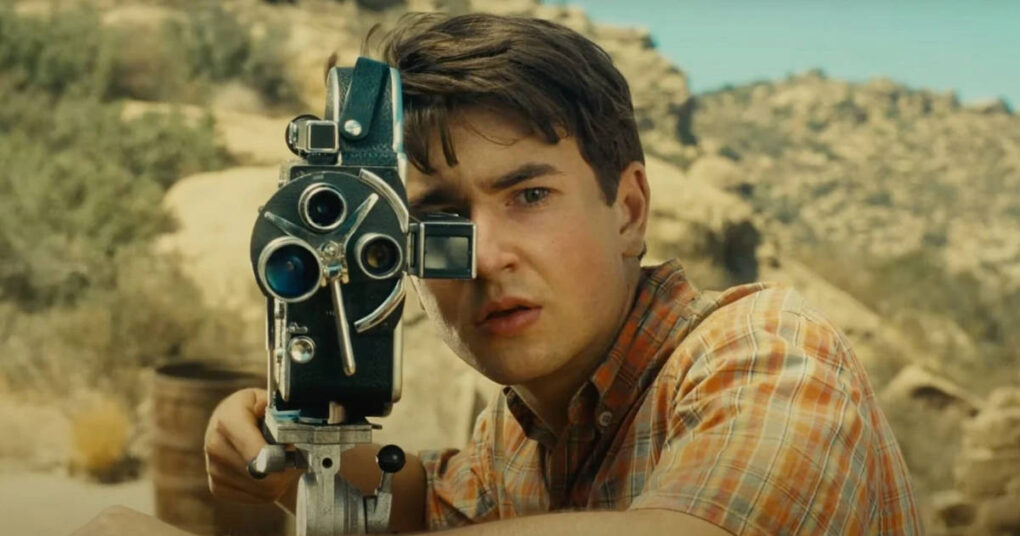Nobody knows better than King Midas what the general public likes. But in recent years, with the exception of titles like Ready Player One and The Adventures of Tintin: Secret of the Unicorn, Steven Spielberg seems to be more interested in his role as a director in titles aimed at minorities, for seemingly he finds them more satisfying – otherwise, he continues to produce blockbuster films. In line with other directors who, after the coronavirus pandemic, have shot stories with many autobiographical sketches, such as Kenneth Branagh (Belfast), James Gray (Armageddon Time) and Paul Thomas Anderson (Licorice Pizza), Spielberg is inspired by his own memories, and has even come back to put his name to a screenplay, something he has not done since Artificial Intelligence, in 2001, which he co-wrote with Tony Kushner, and with whom he collaborated on Lincoln and West Side Story.
Everything points to this movie being for Steven Spielberg a catharsis to face his own personal demons. It deals with family disintegration, a theme that, in one way or another, has been present throughout his work as a director. At the same time, he has put together a love song to his parents, who died shortly before the making of the film. His mother, Leah, passed away in 2017 at 91, and his father, Arnold, in 2020 at 103. There is also a reference to discrimination and anti-Semitism, to harnessing innate talent and improving day by day, to the danger of focusing on work while neglecting loved ones, and to his first love for a somewhat bewildered young Christian woman, although Spielberg has depicted the clash of religions in a humorous way. And above all, the birth of his cinematographic vocation is present, and the ability of cinema to give rise to legends is shown, referring to The Man Who Killed Liberty Valance, one of the films that the central character goes to see.
The opening sequence, which shows the impact on a young child going to see a film in a gigantic movie theatre full of spectators (such theatres are no longer being built) is outstanding. And there are witty moments such as when the kid shoots a Western with neighbourhood buddies. Upon observing the way his mother’s high-heeled shoe pierced a music score that had fallen on the living room carpet, he realises that he can pierce strips of film to make the shots believable.
As expected Steven Spielberg’s most usual collaborators, are cinematographer Janusz Kaminski, and John Williams, who has composed an exceptional central piano theme. Paul Dano who, until recently was only cast as a young boy, shines on screen as the overly focused engineer Burt, (patriarch of the Fabelman family) a good husband and father, but a bit boring, and Michelle Williams, who stars as the artistic-minded pianist Mitzi, the matriarch. Great performances and a terrific presentation of both characters. For Burt, the cinema is a matter of “visual persistence”, while for Mitzi, it is “art and emotion”. Seth Rogen, who almost always plays comic roles, has never been better as Bernie, the third member of the dysfunctional family. Among the youngsters, Gabriel LaBelle stands out as Sammy Fabelman in his high school days; deserving of mention, too, is Matthew Zoryon Francis-DeFord who, in his first screen experience brings Sammy to life as a child. Not only do they both have about them the air of a very young Spielberg, but they also sparkle, as do the actresses who play Natalie and Reggie, the protagonist’s sisters. Film buffs will enjoy the successful characterisation of David Lynch in the guise of a legendary filmmaker. Although some viewers may perceive a certain drop in intensity, and perhaps the lack of more emotionality, considering who signs off on the film, its last minutes, when Lynch appears, will find their place among the collection of Steven Spielberg’s most successful and most enduring moments. And he already has quite a few to his name….
About the Author: Juan Luis Sánchez
This film review originally appeared on https://decine21.com/peliculas/the-fabelmans-44856 and is translated by Rev. Charles Connolly and reprinted with permission.

